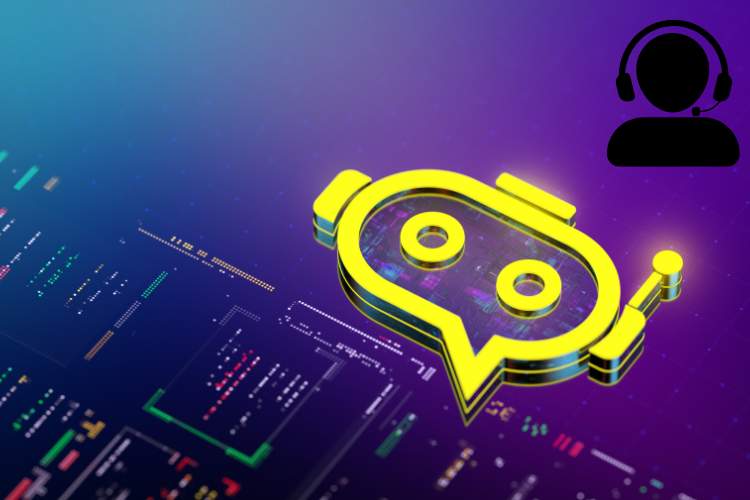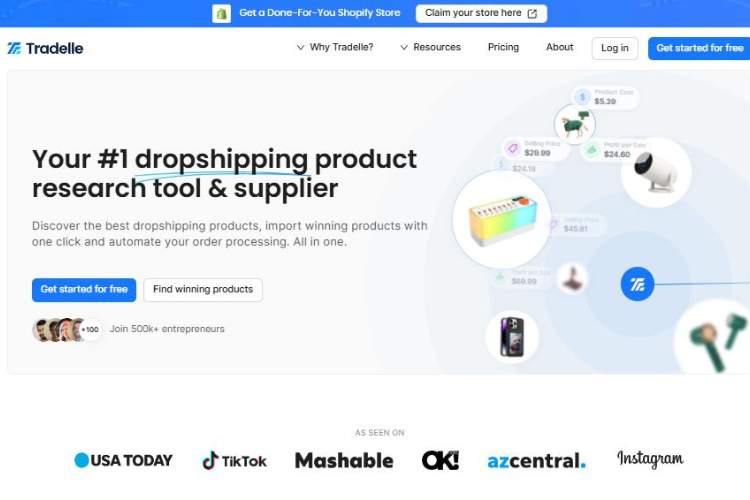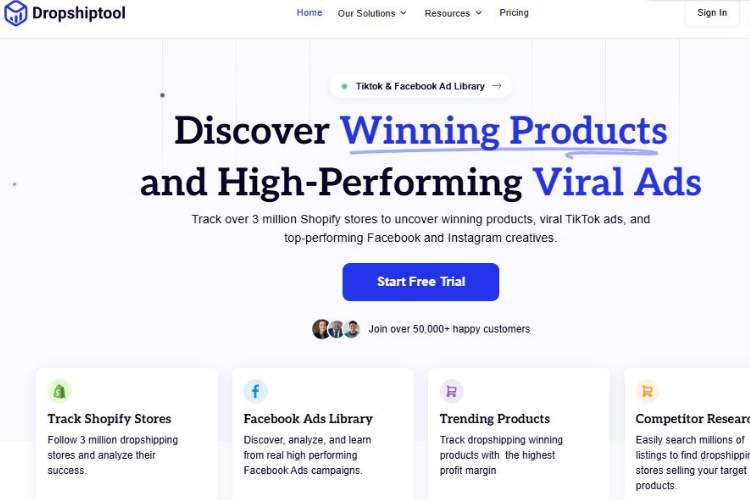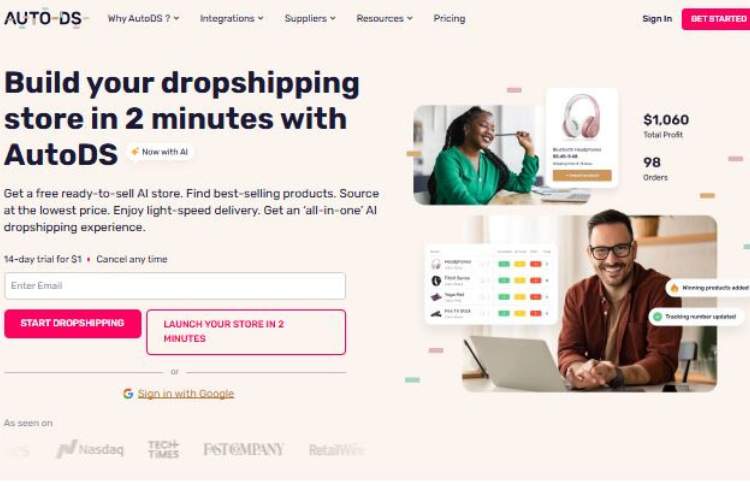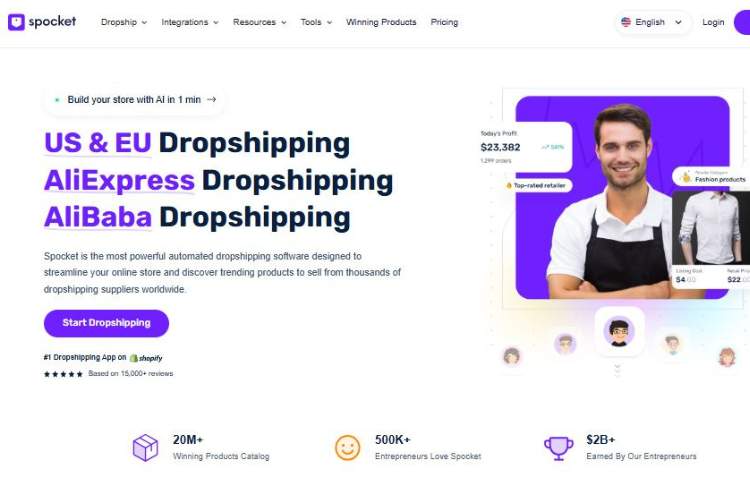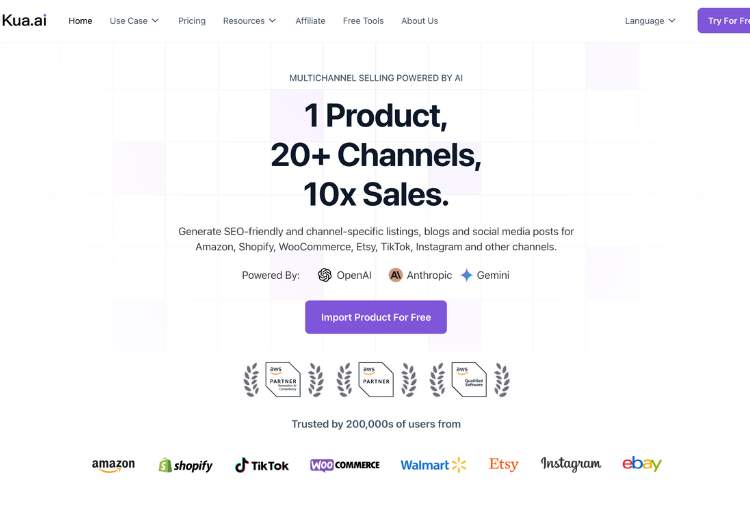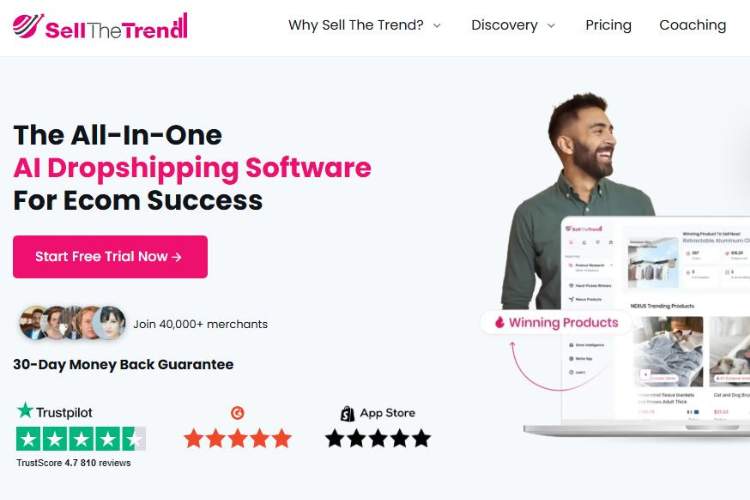Using an AI chatbot in your dropshipping store isn’t just smart—it’s almost mandatory these days. Imagine a digital helper that never sleeps, answering customer questions about shipping times, refunds, product specs, and more.
That means happier customers, fewer support tickets piling up, and more time for you to focus on scaling your business. In this post, I’ll walk you through why chatbots matter for dropshipping customer service and then dig into some tools that partially support or integrate with AI‑driven support.
Why AI Chatbots Are a Game‑Changer in Dropshipping
Customers expect instant replies—especially in fast‑moving shops. You’ve probably had someone ask, “Where’s my order? When will it arrive?” over and over. That’s exhausting if you’re manually handling support.
So what if a chatbot could handle those routine queries 24/7, in natural dialogue, giving product info, shipping estimates, and refund instructions? That’s precisely the advantage.
You build trust, cut response time, and give your store that polished, professional vibe without hiring support staff—especially useful in small dropshipping operations.
AI chatbots learn how to answer questions about policies, provide tracking links, escalate complicated issues, or route to a human agent, all while sounding human.
The experience can include follow‑up prompts (“Does that answer your question? Need anything else?”), feedback loops, and even empathy (“Sorry you’re anxious about delivery—here’s the latest update…”).
Users feel heard, issues resolve faster, cart abandonment drops, and returns/questions get handled more efficiently.
Manual errors go down too—no forgotten messages or lost email threads. And you can pull in customer data: order numbers, delivery status, stock levels, even upselling suggestions in chat. In essence, the chatbot becomes a dynamic sales assistant and support rep in one.
For dropshippers juggling product sourcing, order fulfillment, marketing, and analytics, this frees up mental space to focus on strategy. You ask: “Does it really work in live environments?” Absolutely—tools like Tidio claim they can handle up to 70% of queries automatically.
So yeah, AI chatbots aren’t future‑tech—they’re essential customer support infrastructure for dropshipping e‑commerce today.
Crafting Customer Service Experience with Chatbot Workflows
Building a chatbot flow isn’t linear—you need to anticipate how customers navigate questions. Start with shipping: “When will my item arrive?” Chatbot pulls tracking or gives estimated dates. Follow with returns: “I want to cancel or return.”
Bot explains policies, gives links, or triggers human follow‑up. Then product specifics: “Does this come in size medium? What’s the warranty?” Bot checks backend data or trained FAQs.
A good chatbot also prompts feedback: “Was this helpful? Yes/No.” If “No,” it can hand off to live chat or submit a ticket.
That natural dialogue structure—question, clarify, confirm—feels like talking to a human. And if the flow gets broken, an apology (“Sorry, I didn’t get that. Can you try again?”) keeps things smooth.
You can also add upsell or cross‑sell suggestions: “Customers who bought this often add a charger. Want me to add one?” Or politely ask for email if they need further follow‑up. This subtle personal touch builds loyalty.
Emotion-wise, your tone matters—you want empathetic, friendly, confident. So instead of robotic: “Your order ships in 3–5 business days,” the bot can say: “Good news—your package is on its way and should arrive between Aug 5 and Aug 10.
Let me know if you want tracking.” That gives emotional nuance and a personal feel. It’s not perfect grammar every time—using conversational phrasing and occasional informal grammar helps authenticity. That’s what makes a bot feel human.
Integration with Dropshipping Tools: How AI Customer Support Fits In
Most dropshipping platforms handle product sourcing, order automation, and fulfillment—but few offer full in‑built AI chatbots. That means integrating a support chatbot via Shopify apps or external bots.
You want tools that expose order data, customer queries, shipping timelines, and templating features so the chatbot can reference triggers like status change or refund eligibility.
The ideal setup: your dropship tool connects orders, the chatbot connects to that backend, and support flows talk to both. If a customer asks “Is X in stock?” the bot checks via inventory API. “Where’s my order?” it pulls status. “Can I change shipping address?” it triggers workflow or ticket.
So when I look at tools like Tradelle, AutosDS, Spocket, Sell The Trend, Kua.ai—they each offer varying levels of automation and support workflows. Some provide chat or helpdesk integration, others content‑AI mainly.
We’ll see what features each provides that help customer service chatbot needs: shipping tracking, messaging automation, helpdesk/snippet templates, live chat access, integration points.
Top Tools for Dropshipping AI Customer Service Chatbot
1. Tradelle
Tradelle is primarily a product‑research and supplier platform tailored for dropshippers—combining curated winning‑product discovery, supplier relationships, and automated fulfillment.
It uses AI‑driven big data crawlers to validate trending products, analyze sales and seasonality, and ensure high engagement potential before recommending products. Alongside that, it also acts as a supplier and fulfills orders automatically without manual steps.
What really sets Tradelle apart is the built‑in support structure: every user gets a dedicated success manager (“specialist”) who checks in regularly, helps optimize store metrics, and acts as a contact point for questions or troubleshooting
For customer service chatbot needs, Tradelle supports automated fulfillment updates (shipping triggers), and its communication channels include live chat, contact forms, and that personal specialist—helping when a chatbot might escalate issues.
While Tradelle doesn’t provide its own chatbot interface, the infrastructure—automated order tracking, fulfillment notifications, success manager contact—is exactly what a good support bot needs to query and deliver accurate responses.
Use cases include real‑time tracking, refund status checks, and escalation if the bot can’t handle an issue. Who’s it for? Emerging and scaling dropshippers who need validated product data, automated fulfillment, and high‑touch support via a human specialist behind the scenes.
2. Dropshiptool io
(Research for Dropshiptool io largely reveals its product database, analytics and automation focus though specific chatbot features aren’t documented. In absence of direct info, we can infer.) Dropshiptool io is an AI‑powered product research toolkit—offering a deep database of trending items, analytics on sales velocity, pricing and competition.
Core features include product discovery, supplier filtering, margin calculators, and store integrations (Shopify, WooCommerce). For customer service chatbot needs, it provides dynamic data: shipping estimates, product specs, supplier details, and order analytics that a chatbot could pull.
Though it doesn’t include built‑in chat or snippet automation, these API hooks and data feeds are essential to make the chatbot effective. It’s ideal for store owners wanting product insight and automated import, while building a separate chat layer via Tidio or another AI bot layered on top.
3. Autods
AutoDS is an all‑in‑one dropshipping platform that automates product sourcing, imports, order fulfillment, and store management across Shopify, WooCommerce, eBay and other channels. It emphasizes end‑to‑end automation, saving flex time on manual operations.
From a customer‑service perspective, AutoDS offers message management features—especially for eBay stores—including snippet templates, filters, and automatic messages (“automatic messages sent to customers”) under each supplier setting. They also offer 24/7 live chat support, with average response times around one hour, and ticket system support.
This setup—automated messages and snippet filters—mirrors part of a chatbot’s conversation flow: templated replies for common questions (order, shipping, cancellation). While AutoDS doesn’t supply its own AI chatbot interface, its support messaging and automation lets you feed into a chatbot engine or use AutoDS’s templates as responses.
Use cases: automatic shipping notifications, FAQ replies via bot, filtered message handling, and escalation to human support.
Who’s it for? Small to mid‑size dropshippers who want full operational automation with integrated messaging tools and support for customer communication workflows.
4. Spocket
Spocket is a dropshipping sourcing platform designed to connect store owners with fast‑shipping suppliers (mostly US/EU), integrated into Shopify and WooCommerce workflows. It emphasizes product import, fulfillment automation, and supplier reliability.
For support bot integration, Spocket itself doesn’t build a chatbot, but integrates live chat and helpdesk apps directly: options like Chatway, WD‑Live Chat, Talkvisor, Channel‑Live Chat, NestDesk help integrate live support and AI‑powered conversation widgets into stores .
Spocket also provides 24/7 support via email and live chat for merchants through their support team and Academy resources.
Use cases: combining fast shipping product sourcing with built‑in live chat widgets that include AI features, FAQs, and helpdesk flows. A chatbot overlay can use Spocket’s support service or live chat as fallback human support.
Who it’s for: store owners needing reliable suppliers and integrated live chat/AI helpdesk tools out of the box.
5. Kua AI
Kua.ai is an AI content creation platform targeted at e‑commerce sellers—Shopify, WooCommerce, Amazon, eBay, WordPress users. It primarily helps you create SEO‑optimized content: blogs, product descriptions, ad copy, emails, social posts, using AI chat or workflow + template system.
It also offers an AI chat interface with web access, letting you ask questions, generate content in natural dialogue, and even build custom AI apps.
For customer service chatbot needs, Kua.ai’s chat interface can double as a support bot—trained with product info templates, return policies, shipping data—and deliver conversational answers. It has web‑access and can fetch factual information.
The one‑click product listing feature that converts AliExpress URLs into product descriptions can feed product data to the bot. Use cases: automatic response generation to FAQs, conversational content for email and chat, multi‑channel chatbot support.
Who’s it for? Content‑heavy store owners, marketing‑focused teams needing both chat‑style dialogue and rich generated support/responses to customers—especially when you want to build your own AI app on top.
6. Sell The Trend
Sell The Trend is an AI‑powered all‑in‑one dropshipping software that brings together product research, store automation, marketing tools, and support into one platform.
Its core features include the NEXUS AI research engine to identify trending products, AI Brand Builder to generate marketing content, a SellShop instant store builder, automated order import and fulfillment, and integrations with Shopify, WooCommerce, eBay, Amazon, TikTok, plus Chrome extensions for easy importing.
Customer service chatbot relevance: Sell The Trend includes 24/7 customer support, offers courses, guides, and a responsive support team reachable via chat and email. It also outputs brand‑ready content, bots could leverage its marketing copy or template FAQs.
While it doesn’t have a built‑in AI help chatbot, its reliable support, knowledge base, and templated content can feed a chatbot’s responses.
Use cases: feeding bot with product‑driven FAQs, automatic fulfillment statuses, marketing dialogues, and escalation paths.
Who’s it for? Dropshippers who want integrated research, automation, store templates and need robust support and content generation in one environment.
Conclusion & Recommendation
After diving into these tools, here’s how I’d rank them for building or supporting an AI chatbot for customer service in a dropshipping store:
Top 3 picks:
- AutoDS – Because it delivers automated messaging, customer snippets, order updates, and live chat support, making your chatbot more accurate and integrated.
- Sell The Trend – With its full automation, reliable support team, rich templates, and marketing content generation, it gives chatbot engines solid data and fallback support.
- Tradelle – Though not offering a chatbot UI, its automated fulfilment, tracking notifications, and personal specialist manager offer high‑quality infrastructure for support workflows.
Spocket and Kua.ai also have strong features—Spocket’s live chat integrations and fast suppliers, Kua.ai’s chat content engine—but my first three give you more direct support automation and chatbot‑ready integrations. Dropshiptool.io is solid for product data but lacks built‑in messaging so it’s lower on the list.
Personal take: I find that tools offering both automated fulfillment data hooks and built‑in messaging templates or support channels are golden for chatbot workflow. You need that reliable backend so the bot isn’t guessing.
That’s why AutoDS is my go‑to for support automation; then Sell The Trend if you like an all‑in‑one stack; Tradelle if human‑in‑the‑loop specialist support matters. Spocket and Kua.ai can fill in gaps or power marketing/chat layers, but alone they won’t fully satisfy support chatbot needs.
That’s the low‑down—hope this helps you pick the right combo and build a chatbot that doesn’t feel like a robot.

